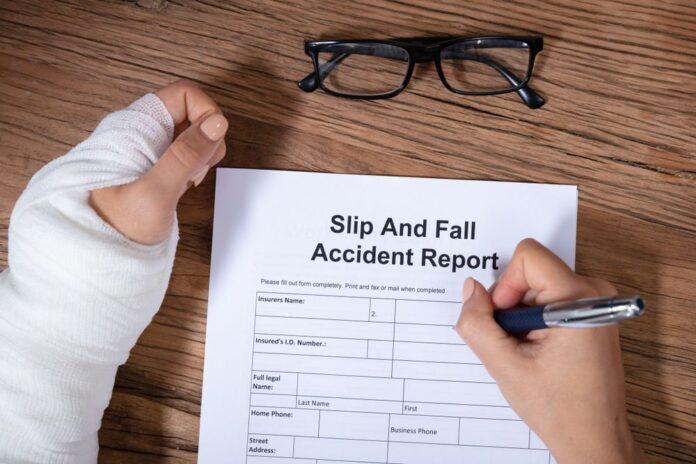If you have ever been involved in a bad accident that resulted in injuries, you could incur a variety of forms of loss including medical and therapy bills, lost wages from having to leave work, and various other associated expenses. Due to this, it is natural to seek reimbursement for your losses. In these cases, the best path to move forward is to file a personal injury claim. There are various examples of what could constitute a personal injury. However, proving negligence took place can be more complicated. There are several ways that a personal injury lawyer will attempt to prove negligence.
Types of Personal Injury Cases

Personal injury law is somewhat broad and typically covers injuries sustained in an accident by one party. Some of the most common forms of personal injury cases include the following:
- Workplace Accidents
- Vehicular Accidents
- Medical Malpractice
- Slip and Fall
- Dog Bites
- Defective Products
- Assault
If you have suffered an injury due to any of these situations, it could be considered a personal injury if another party was at fault and negligent in their actions.
How to Prove Personal Injury Negligence

While it can be clear that you were injured in an accident by evaluating medical records, to win a personal injury case you will also need to prove that the other party involved was negligent in their actions. An attorney will typically need to follow a few different tips and steps to prove negligence and allow you to win or settle a personal injury claim. To learn more keep reading here.
Duty of Care Existed Between Parties
According to Sumwalt Anderson, one of the first things that your attorney will attempt to prove is that there was a duty of care between parties. In general, the duty of care means that an individual or company has the responsibility to provide act a certain way to help ensure the safety of others around them. There are various forms of duty of care that could be established depending on your case. For example, drivers have the duty of care to be safe when behind the wheel, medical professionals have the duty of care to care for their patients, and product manufacturers have the duty of care to ensure their products are safe for general consumer and commercial use.
Duty of Care Was Breached
In most situations, it is not too challenging to prove that the other party did have a duty of care as it tends to be implied in most situations. However, to win a case, your attorney will also need to prove that the duty of care was breached. Some examples of duty of care being breached can include if you were in an auto accident due to excessive speeding, if a healthcare provider made an error during a surgical procedure, or if a product manufacturer did not take proper steps to confirm their product was safe to use.

The challenge of proving that a duty of care was violated can vary from one situation to the next. If you were injured in an auto accident due to excessive speeding or a victim of assault, it can be somewhat easy to prove by reviewing police and witness reports. If you were injured due to a medical mistake or defective product, it could require more diligence including hiring an expert witness to review medical and injury reports.
Negligence and Breach of Care Led to Injury
While someone could have been negligent in their actions, you will not have a personal injury claim if you are not able to prove that their actions caused an injury. You will have to prove that you were in fine health prior to the accident and that the breach of care led to a setback.
Injuries Led to Damages
Finally, you will need to be able to prove that the injuries you have sustained did lead to a financial setback or impact your quality of life. In most cases, an injury sustained will heal on its own and you may not even incur medical bills. In these situations, receiving a personal injury settlement could be challenging as you will not have incurred any actual damages. However, if you have incurred either financial or non-financial damages, you could add them to your claim. There are various forms of both financial and non-financial damages commonly included in personal injury claims.

Common forms of damages included in personal injury claims:
- Medical and therapy bills
- Lost wages due to inability to work
- Increased costs associated with managing a new disability due to the injury
- Pain and suffering and mental anguish
For any financial damages that you have incurred, it is important to keep a proper log and receipts outlining all of these costs. You can also make an assumption for future financial expenses that you will incur, which can include lost wages in the future or recurring medical expenses. If you have experienced significant pain and suffering and mental anguish, you are able to include them in your claim but coming up with a fair value can be more challenging.
Who to Name as Defendant?

Your attorney will also help you by identifying who to name as a defendant in your case. Generally, you will name the individual that was negligent in the case. However, depending on your type of injury, you could also name a medical practice, real estate owner, or business. In many cases, individuals and professional businesses will have some form of liability insurance that will cover these claims. Your personal injury lawyer will frequently work with the insurance providers as well to negotiate a fair settlement for your situation.
If you have been involved in any type of accident and have suffered a personal injury, filing a personal injury claim can be the most effective way to receive compensation for your damages incurred. As there is a lot of complexity involved with this type of law, having legal support by your side is always beneficial.









